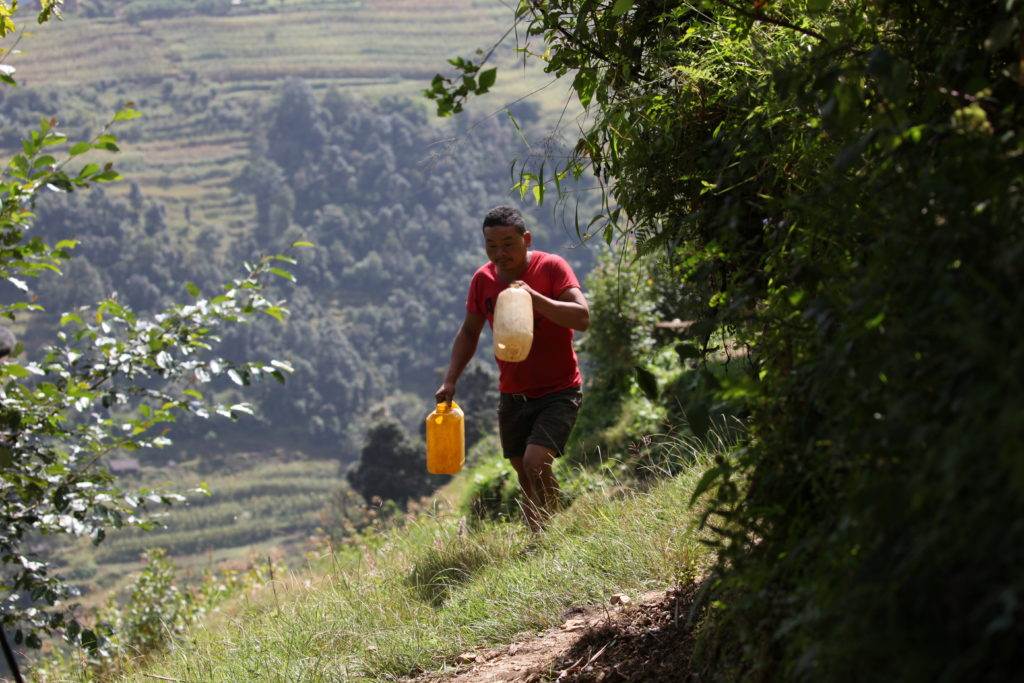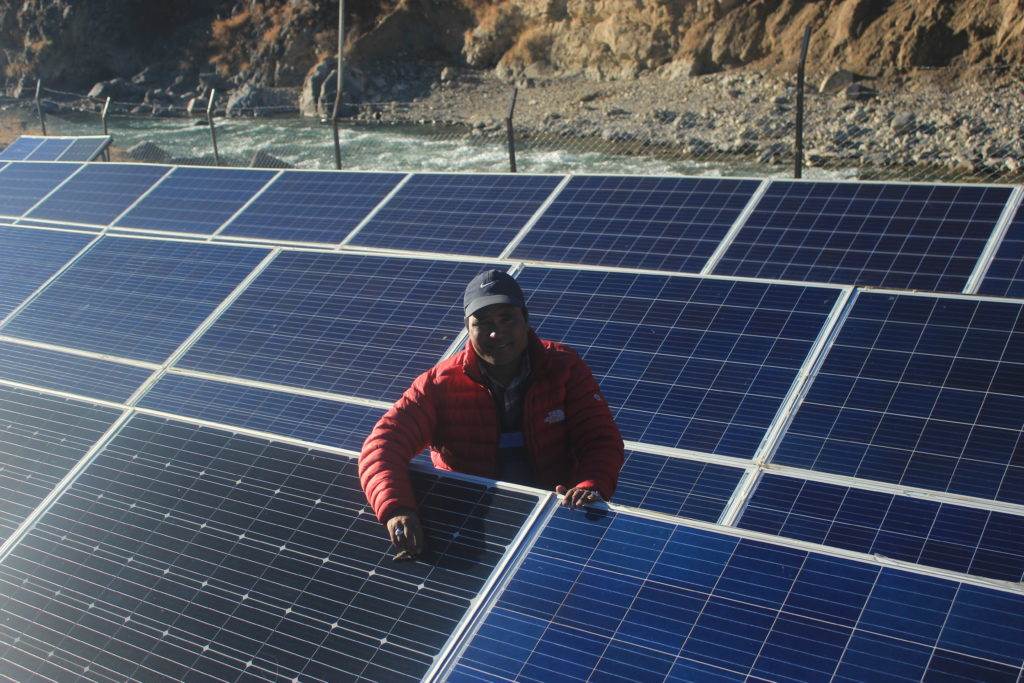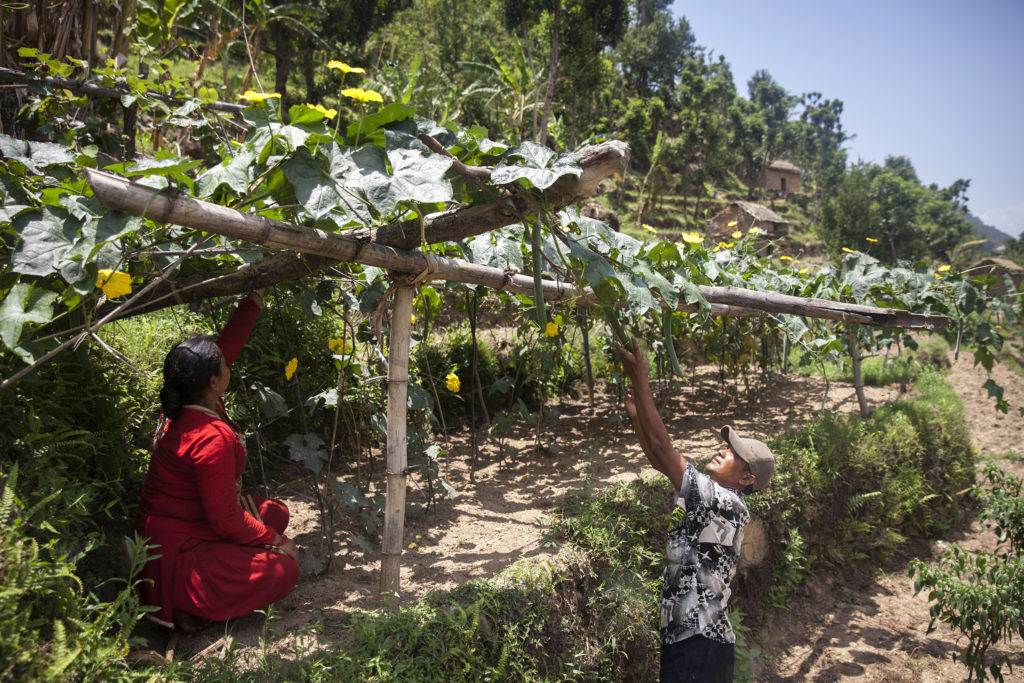How solar power lifts water to mountain communities
Solar power can help overcome the odds
The impact of climate change is felt all across Nepal – drying lands lead to droughts and rapid melting in the Himalayan Region is affecting fresh water resources in the plains, greatly reducing the clean drinking water available. Erratic rainfall caused by climate change creates further problems for ground water reservoirs, as it becomes harder to predict when clean water will be available – especially when compared to certain seasonal rainfall that made fresh water available around the same time every year. All of these factors combine to post a challenge for smallholder farmers in the hilly areas of Nepal.
Agriculture across the remote Bajhang, Bajura, Jumla, Kalikot and Mugu regions in Nepal relies on reliable water access for success. But erratic rainfall and extreme winds have adversely affected production in recent years.
Worse still, many villages are hours from their nearest water source. Many walk hours just to fill buckets with enough water to drink and cook with. And with no reliable water supply to irrigate, the fate of their crops is left to erratic, unpredictable rainfall.
“Sometimes it doesn’t rain and the vegetable saplings die not getting water. We don’t have any irrigation facility. In the highlands at my cattle shed, we collect the dirty water in a reservoir – the water from washing hands and utensils. We use that water for irrigating our vegetable garden up there.”
Ashok, farmer, Thabang Municipality

Ashok has to make a lengthy trek to collect water – without any guarantee there’ll be enough
Farming in the mountainous regions of Nepal has always been difficult – and climate change is making it even harder. However, big change is possible. Through a combination of ingenious solutions, farming communities across Nepal can turn the tables on climate change and thrive.
One part of this incredible mix is Solar Powered Irrigation (SPI), enabling farmers to push water up hills. Here, a solar powered system lifts water from lakes and rivers, transports it up unbelievably steep slopes to rural communities where it feeds into multi-use water systems. These systems then provide clean water for irrigation, drinking and farming – eliminating the painful drudgery of hauling water manually.
Clean water needs to be closer to home
Traditional water sources are threatened by climate change – and those that are available are often far away, remote and rarely provide enough for the needs of an entire family. For farmers like Ashok, fetching water is an essential and lengthy task.
Solar powered pumps have the power to help entire farming communities save time and access clean water close to their homes. Saved time means that farmers like Ashok can focus elsewhere – tending to crops, caring for their family or planning ahead for the next harvest.
“We need to wake early at around 3-4 am in the morning and go to fetch water since we need to get to the water source early to get water. After 3:30 am there’s a queue of people there. We have difficulty fetching even the drinking water, let alone irrigating the crops.
If we both [my wife and I] come to fetch water together, it’s enough for the day. Otherwise, if only one person comes to fetch water, we need to get to the water source two times a day – in the morning and evening. We need water for use in toilet, cooking food, and drinking.”
Ashok, farmer, Thabang Municipality
A sunny solution
With a little support, even in Nepal’s most remote, off-grid mountainous regions, it’s possible for farming villages to have water on tap for drinking, washing and farming. By using the power of the sun, solar powered irrigation (SPI) and clever engineering, the water from rainfall and mountainous springs can be caught, stored and distributed in an eco-friendly and cost-effective fashion.
Solar powered water pumps are installed across rivers and are able to lift and carry water. They’re reliable, easy to operate and maintain and demand very little labour.
How do they work?
The solar powered pumps implemented transport the water from river to local reservoirs are equipped with solar cells. The solar energy is absorbed by the cells, then converted into electrical energy via a generator. The generator then feeds an electric motor that drives the pump and starts lifting water.
These amazing solar powered pumps lift water from the river and distribute them to reservoirs close to Nepal’s farming communities, where pipes are installed to distribute water. Local reservoirs also naturally collect rain water, which is then turned into clean water and can be distributed too.
Even when the sun is at its hottest in the most arid regions of Nepal, it continues to provide the solar powered irrigation systems with energy – and gets water to crops when they need it most.
By having a reliable and safe source of water, farming communities can enjoy bigger harvests that produce enough to feed their families, with enough crops to spare for selling at a profit at the market.
Areas in Nepal that were previously famous for apple farming – but threatened due to climate change – are now viable spaces for orchards again, alongside crop and vegetable farming, according to local farmers. The use of solar pumps helps farming communities produce crops all year round, even during the dry season.
The result is hugely positive. Not just financially, but environmentally and for the health of the farmers. Not only does it enable them to drink water safely, it means they can grow crops and enjoy a more balanced diet and no longer have to put up with the debilitating effects on the body of lugging huge weights up hills.

These solar panels have the power to lift clean water to even the most remote communities
Irrigation helps farmers thrive
Tek is a farmer living in Bajura, who has been farming since he returned home after travelling to India to try and find work – and he hasn’t looked back since. Thanks to solar powered irrigation, he now has the reliable water supply he needs, his crops are thriving and he is planning for the future:
“We built a multi-use water system with support. We now have sufficient water for irrigation.
We have so much natural resources in our country and there are lots of opportunities. If we give our best and work hard then we can live a good life. So, if we give our best then anything is possible.”
Tek Bahadur Thapa, farmer, Bajura District
Functioning long into the future
In order for a solution to be sustainable in the long term, it has to serve the needs of the community, create jobs and be built to last. Each set of solar pumps has a local committee, set up to watch over the upkeep of the pumps and the needs of the community. The chairperson of the committee is responsible for operating the pump and distributing the water.
To help with the upkeep of the solar pumps, each local community is adopting a Pay for Water scheme where each household pays a small, affordable fee for using water on a monthly basis. This payment is collected and is exclusively used for the care and maintenance of the pump. Thanks to the Pay for Water scheme, each community can look forward to years of sustainable use of the solar pumps, and thus look forward to clean, affordable, accessible water with a low environmental cost.

Tek Bahadur Thapa and his wife Nirmala Thapa in their vegetable garden
“It seems like a miracle to us. We never had any idea about Solar Powered Irrigation. With the regular availability of water, we are excited to expand our apple orchards.”
Min Bahadhur Thapa, chairperson of solar pump user committee, Bajura District
One step in an ingenious solution
Eco-friendly and affordable access to clean water has the power to change the lives of farming communities across Nepal. These brilliant solar powered pumps are just one part of our Turning the Tables on Climate Change campaign. We believe that, through a combination of small solutions, big change can happen. And you can help make that possible!
With your support more farmers in Nepal can Turn the Tables on Climate Change, adapt and succeed. Donate and make more amazing things happen.
Learn more about our transformative work, the communities we work with and how you can get involved with Practical Action.